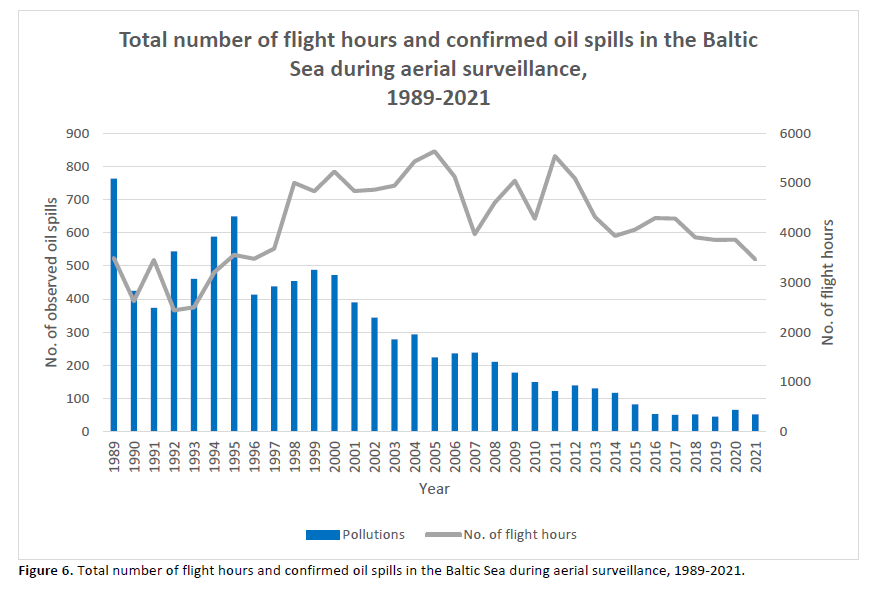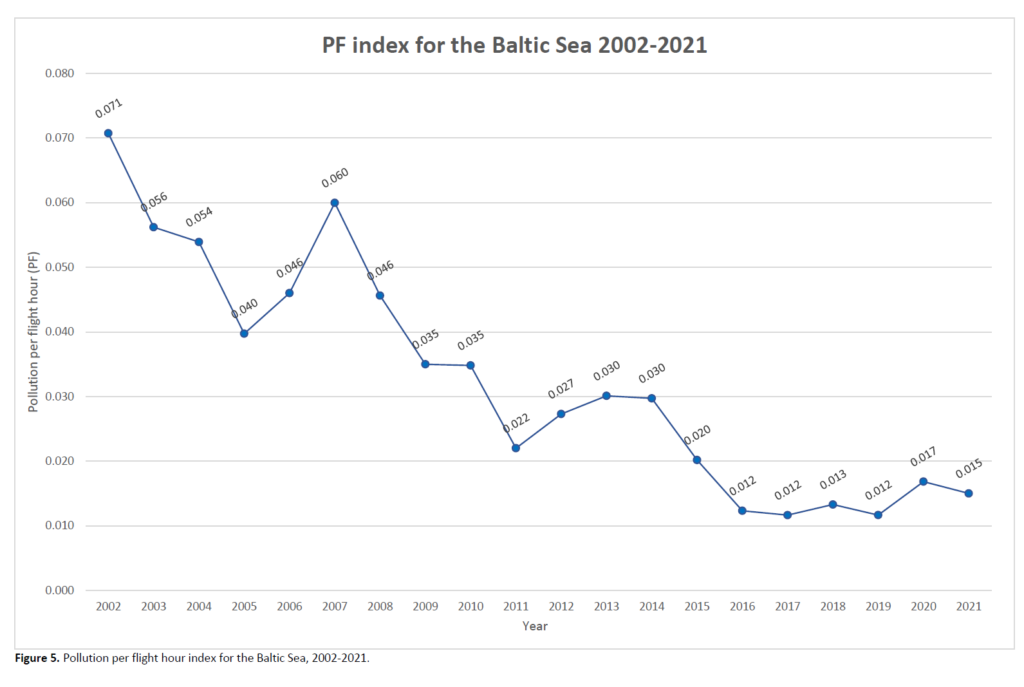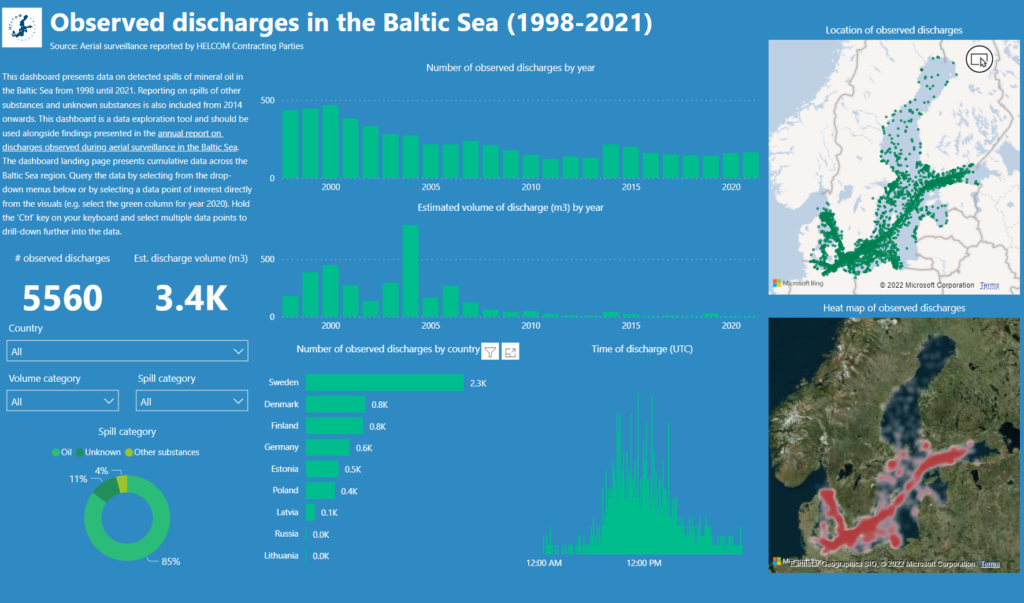Aerial surveillance and regional cooperation remain key in detecting oil spills in the Baltic Sea, Last year, 52 harmful spills of mineral oil were detected in HELCOM countries’ waters, according to the Annual report on discharges observed during aerial surveillance in the Baltic Sea 2021. The long-term decreasing trend is remarkable, as in the starting year of aerial surveillance of spills in 1989, 763 pollution occurrences were reported.

“The decreasing number of harmful spills in the Baltic is likely a result of intensive aerial surveillance, even if the density of shipping has grown. It acts as a deterrent, as the vessels are aware that they are constantly being watched”, comments Markus Helavuori, Professional Secretary of HELCOM.
Over the years, the aerial surveillance activity in the countries has substantially improved. For example, the remote sensing equipment on board aircrafts and satellite surveillance is in good use to enable bigger area coverage and optimization of flights effectiveness. While in 2021, staff absence caused by covid-19 and technical reasons caused a dip in the annual flight hours, overall, the high number of annual flight hours has been maintained.
Aerial surveys of oil spills have been carried out by Contracting Parties of HELCOM with standardized methods for several years, covering nearly the entire Baltic Sea. That is why it has been a substantial part of the HELCOM indicator on oil spills affecting the marine environment and, the confidence of the indicator evaluation has been considered high. The update of all HELCOM indicators will soon be finished as they form an elementary part of the next Holistic Assessment of the Baltic Sea (HOLAS 3), to be released in 2023.

Collecting data on the frequency, size and nature of such spills is essential to understanding the environmental impacts of different kinds of substances on the Baltic Sea. Out of the 52 mineral oil spills identified in the Baltic Sea by air in 2021, the overwhelming majority (98%) were smaller than one cubic metre (1 m3) – small sizes of detected spills being another long-standing trend.
Read the full report: HELCOM Annual report on discharges observed during aerial surveillance in the Baltic Sea 2021.
Interactive dashboard on observed discharges in the Baltic Sea (1998-2021)

An interactive data visualization dashboard has been developed by the HELCOM Secretariat to offer users a more open and analytical view into the aerial surveillance dataset (dashboard accessible here). This dashboard presents data on detected spills of mineral oil in the Baltic Sea from 1998 until 2021. Reporting on spills of other substances and unknown substances is also included from 2014 onwards. The dashboard has been developed using ‘Power BI’ a data visualization software by Microsoft.
The dashboard is interactive meaning that users can filter data based on fields of interest. Users can drill-down into the dataset by simply selecting a data field via the visual, dropdown, or map.
Press Release HELCOM

